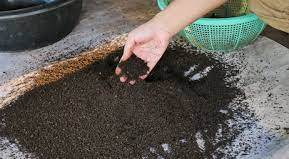BIOFERTILIZER- TYPES, USAGE AND BENIFITS
INTRODUCTION
Biofertilizer is biological products containing living microorganisms that, when applied to seed, plants either on the surfaces or soil, promote growth by increasing the supply of nutrients, increasing root biomass and increasing nutrient uptake capacity of the plant.
Biofertilizer is also considered as everything from green manures, through animal manures, to plant extracts. It adds the substances that contribute to the improvement of microorganisms’ activity too. It has the ability to colonize the rhizosphere or the interior of the plant.
BENEFITS
- Biological fertilizer boosts the nutrient composition of soil through the processes of nitrogen fixation and solubilizing mineral ions and thereby stimulates plant growth through the synthesis of growth-promoting substances.
- It increases crop yield by 20-30%, replaces chemical nitrogen and phosphorus by 30%.
- The main role of biofertilizers application is promoting plant growth without deleterious side effects for environment and increasing harvest yields.
- Microbial biofertilizers has significant role in maintaining soil fertility and improving its structure by influencing the aggregation of the soil particles.
- They also contribute to the better plant-water relation, provide protection against drought, make plants less prone to some soil-borne diseases, including causing by fungi that additionally produce mycotoxins and reduce the incidence of insect.
CATEGORIES OF BIOFERTILIZERS WITH EXAMPLES
Nitrogen fixing bio fertilizers
1. Free-living Azotobacter, Beijerinckia, Clostridium, Klebsiella, Anabaena, Nostoc 2. Symbiotic Rhizobium, Frankia, Anabaena azollae 3. Associative symbiotic Azospirillum
Phosphorus solubilizing bio fertilizers
1. Bacteria Bacillus megaterium var. phosphaticum, Bacillus subtilis 2. Fungi Penicillium sp., Aspergillus awamori, Aspergillus fumigatus, Aspergillus Niger
Bacillus circulans, Pseudomonas striata
Phosphorus mobilizing bio fertilizers
1. Arbuscular mycorrhiza Glomus sp., Gigaspora sp., Acaulospora sp. 2. Ectomycorrhiza Laccaria sp., Pisolithus sp., Boletus sp., Amanita sp. 3. Ericoid mycorrhizae Pezizella ericae 4. Orchid mycorrhiza Rhizoctonia solani
Scutellospora sp. and Sclerocystis sp.
Bio fertilizers for micronutrients
1. Silicate and zinc solubilizers Bacillus sp.
Plant growth promoting rhizobacteria
1. Pseudomonas Pseudomonas fluorescens
USAGE
- Rhizobium is used for leguminous crops,
- Azotobacter can be used with crops like wheat, maize, mustard, cotton, potato and other vegetable crops.
- Azospirillum inoculations are recommended mainly for sorghum, millets, maize, sugarcane and wheat.
- Blue green algae fix atmospheric nitrogen and are used as inoculations for paddy crop grown both under upland and low-land conditions.
Anabaena in association with water fern Azolla contributes nitrogen up to 60 kg/ha/season and also enriches soils with organic matter. Seaweeds are rich in various types of mineral elements (potassium, phosphorus, trace elements etc) hence they are extensively used as manure by people of coastal regions. Seaweed – manure also helps in breaking down clays. The mixture of seaweeds and blue green algae may serve as ideal fertilizer.

DRAWBACK
Though, biofertilizers are a commercially promising approach today in sustainable agriculture, but there are few drawbacks making them less competitive, for example-
- Limited shelf life,
- Lack of the suitable materials for production
- Increased sensitivity to high temperature and difficulties with the storage and transportation.
- Microbial fertilizers require higher amounts to provide plants with enough nutrient content, their effectiveness depends on the soil conditions prevailing in the application zone and results of their action are noticeable after prolonged use.
However, new technologies are being developed to overcome the disadvantages associated with the application of biofertilizers in agricultural ecosystems. In future, bio fertilizers along with use of bio pesticides and organic farming can replace the chemical fertilizers and pesticides in order to make agriculture eco-friendly and sustainable.
FREQUENTLY ASKED QUESTIONS (FAQ)
What is Biofertilizer?
Biofertilizers are biological products containing living microorganisms that, when applied to seed, plants either on the surfaces or soil, promote growth by increasing the supply of nutrients, increasing root biomass and increasing nutrient uptake capacity of the plant.
What is the need of using biofertilizers?
Biological fertilizer boosts the nutrient composition of soil, stimulates plant growth through the synthesis of growth-promoting substances and increases crop yield by 20-30%, replaces chemical nitrogen and phosphorus by 30%. It maintains soil fertility and improves soil structure. Make better plant-water relation, provide protection against drought, and make plants less prone to soil-borne diseases. Thus it makes agriculture sustainable and eco-friendly.
What are the main sources of biofertilizers?
The main sources of biofertilizers include bacteria, cyanobacteria and fungi.